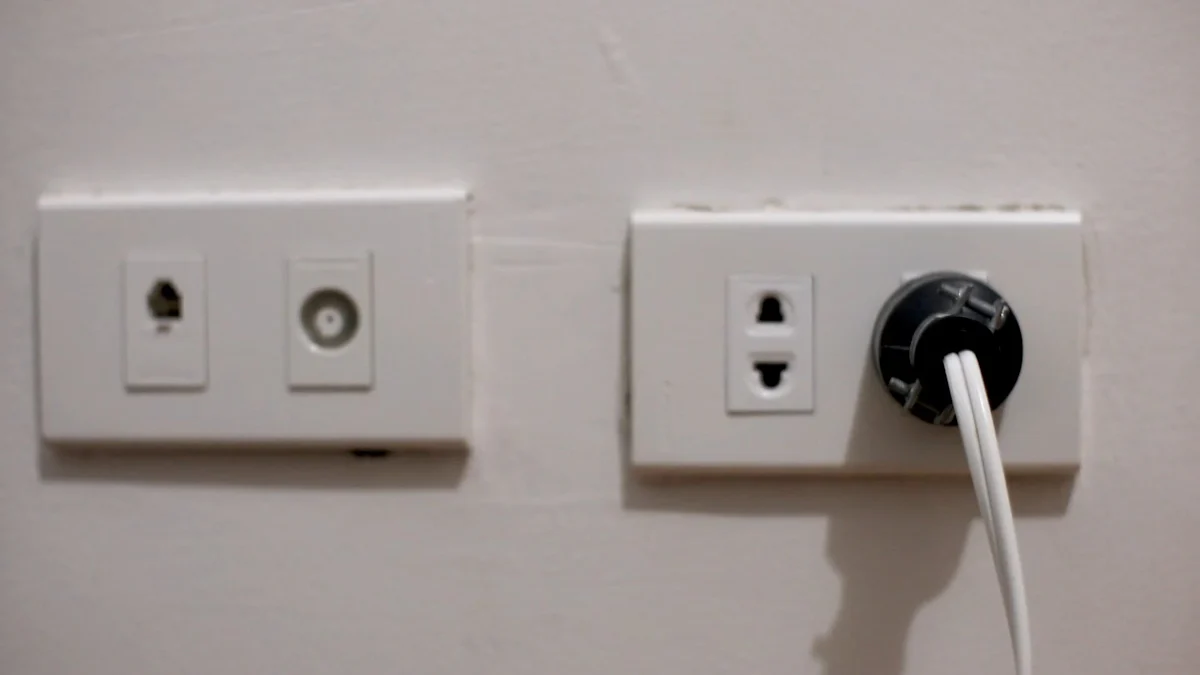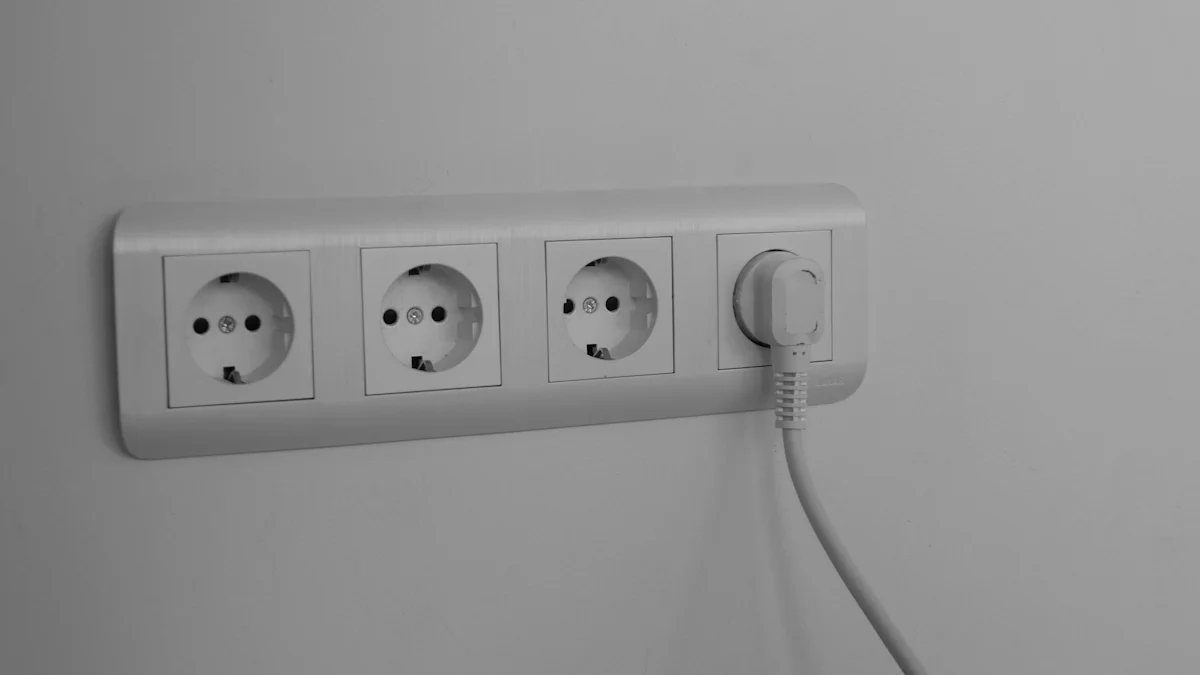
Have you ever struggled with messy cables or limited power outlets on your desk? I’ve been there too, and trust me, it’s frustrating. That’s why installing a desktop multimedia power extension socket can be a game-changer. It’s not just about adding more outlets—it’s about upgrading your workspace. Look for features like universal compatibility, dual USB ports, and a sturdy build. Here’s a quick breakdown of what makes a great socket:
| Feature | Description |
|---|---|
| Universal Compatibility | Works with various plug types (UK, US, CN, French) for global use. |
| Dual USB Ports | Lets you charge two devices at once. |
| Sturdy Construction | Made from durable zinc alloy and plastic. |
With these features, you’ll enjoy a cleaner, more efficient setup. Let’s dive in and make your workspace smarter!
Key Takeaways
- Pick a desktop power socket that works with all devices. It should have two USB ports for better use.
- Get tools like a drill, screwdriver, and measuring tape ready. This helps make the setup easy and quick.
- Always switch off the power before starting. This keeps you safe and avoids shocks.
Tools and Materials for Installation

Before we dive into the installation process, let’s make sure we have everything we need. Trust me, having the right tools and materials on hand will save you a lot of time and frustration. Here’s what you’ll need:
Essential Tools for the Job
You don’t need a fancy toolbox for this. Just a few basic tools will do the trick:
- Drill: A reliable drill is a must for creating holes in your desk. Make sure it’s fully charged or plugged in.
- Screwdriver: A Phillips or flathead screwdriver will help you secure the socket in place.
- Measuring Tape: This will ensure precise measurements for marking the drilling points.
- Pencil or Marker: Use this to mark where you’ll drill.
- Level Tool: It’s optional, but it helps keep everything straight and aligned.
Pro Tip: If you don’t have a drill, you can borrow one from a friend or rent one from a hardware store.
Materials Needed for the Socket
Now, let’s talk about the materials. These are just as important as the tools:
- Desktop Multimedia Power Extension Socket: Choose one that fits your needs. Look for features like USB ports and universal compatibility.
- Screws and Anchors: These usually come with the socket, but double-check to make sure.
- Cable Clips or Ties: These will help you manage the cords neatly after installation.
- Protective Pads (Optional): If you’re worried about scratching your desk, these can be a lifesaver.
Having these tools and materials ready will make the installation process smooth and stress-free. Once you’ve gathered everything, you’re all set to move on to the next step!
Safety Precautions for Installation
Before we jump into the installation process, let’s talk about safety. Trust me, this step is crucial. Working with electricity can be risky if you’re not careful. Here’s how I make sure everything goes smoothly and safely.
Turning Off the Power Supply
The first thing I always do is turn off the power supply. It’s non-negotiable. You don’t want to risk getting shocked while working. Locate the circuit breaker and switch off the power to the area where you’ll install the socket. Double-check by testing the outlet with a voltage tester. It’s better to be safe than sorry. Also, avoid overloading any outlets or extension cords during the process. This keeps everything secure and prevents accidents.
Tip: Keep water, cleaners, or anything damp far away from your workspace. Moisture and electricity don’t mix well.
Preparing a Stable Workspace
A well-prepared workspace makes the job easier and safer. I always start by choosing the right spot for the desktop multimedia power extension socket. Think about where your devices are and how you’ll use them. Here’s a quick guide to help you plan:
| Factors | Description |
|---|---|
| Office Layout | Pick a spot that works with your furniture and workflow. |
| Power Requirements | Check how much power your devices need, like computers or printers. |
| Safety Compliance | Make sure the setup meets electrical safety standards. |
| Future Expansion | Plan for extra sockets in case you add more devices later. |
| User Convenience | Place sockets where they’re easy to reach for plugging in devices. |
A stable desk and a clutter-free area are also essential. You don’t want tools or materials falling over while you work.
Using Protective Gear
I never skip protective gear. It’s like having an extra layer of safety. Insulated gloves and goggles are my go-to items. Gloves protect my hands from accidental shocks, while goggles shield my eyes from dust or debris when drilling. If you’re using a ladder, make sure it’s insulated too. These small steps can make a big difference in keeping you safe.
Pro Tip: Always use tools with insulated handles. They’re designed to protect you when working with electricity.
By following these precautions, you’ll set yourself up for a smooth and safe installation process. Let’s keep things safe and stress-free!
Step-by-Step Guide to Install a Desktop Multimedia Power Extension Socket

Step 1: Selecting the Installation Location
The first thing I do is pick the perfect spot for the socket. I think about where I use my devices the most. For example, if my laptop and phone are always on the left side of my desk, I’ll install the socket there. I also make sure the location is easy to reach but not in the way of my work. Trust me, this small step saves a lot of hassle later.
Step 2: Marking the Drilling Points
Once I’ve chosen the spot, I grab my measuring tape and pencil. I measure the socket’s base and mark the drilling points on the desk. I double-check the alignment with a level tool to make sure everything looks straight. This step is quick but super important for a neat installation.
Step 3: Drilling the Holes Safely
Now comes the fun part—drilling! I use a drill with the right-sized bit for the screws. Before I start, I put on my goggles to protect my eyes from flying debris. I drill slowly and steadily, keeping the drill perpendicular to the desk. If you’re new to this, don’t rush. Take your time to get clean, precise holes.
Step 4: Securing the Socket to the Desk
With the holes ready, I position the desktop multimedia power extension socket over the marks. I use the screws provided in the package to secure it tightly. A screwdriver works fine, but a power drill with a screwdriver bit makes it faster. I make sure the socket doesn’t wobble—it should feel solid and stable.
Step 5: Connecting the Power Supply
Next, I connect the socket to the power supply. I plug it into a nearby wall outlet and arrange the cables neatly using cable ties. If the socket has a built-in power cord, I ensure it’s not stretched or tangled. This step is straightforward but crucial for a clean and functional setup.
Step 6: Testing the Socket for Functionality
Finally, I test the socket to make sure it works perfectly. I plug in a few devices like my phone charger and desk lamp. If everything powers up, I know I’ve done it right. For more advanced testing, tools like Hercules or SocketTester can check the socket’s connections. Here’s a quick look at some tools you can use:
| Tool | Description |
|---|---|
| Hercules | A fully functioning TCP/UDP client/server, great for debugging sockets. |
| Wireshark | A network protocol analyzer that captures and displays packet data. |
| WebScarab | A tool for intercepting and modifying web traffic, useful for analyzing socket connections. |
| SocketTester | A dedicated tool for testing socket connections. |
| tcpmon | A Java open-source tool that monitors TCP connections, allowing inspection and modification of data. |
Once I confirm everything works, I pat myself on the back. My desktop multimedia power extension socket is ready to use!
Troubleshooting Common Issues
Even with the best preparation, things don’t always go as planned. I’ve faced my fair share of hiccups while installing a desktop multimedia power extension socket. Here’s how I troubleshoot common issues to get everything back on track.
Fixing Loose Connections
Loose connections can cause devices to lose power or flicker. I always start by unplugging everything and turning off the power supply. Then, I check the socket’s wiring. If I find any loose screws or wires, I tighten them with a screwdriver. For plug-in sockets, I make sure the plug fits snugly into the wall outlet.
Tip: If you’re unsure about the wiring, consult the socket’s manual or call a professional electrician. Safety first!
Resolving Power Flow Problems
Sometimes, the socket doesn’t deliver power to connected devices. When this happens, I test the wall outlet with another device to rule out outlet issues. If the outlet works fine, I inspect the socket’s power cord for damage. A frayed or bent cord can disrupt power flow. I also check for overloads—too many devices plugged in can trip the circuit.
Pro Tip: Use a surge protector to safeguard your devices and prevent power flow issues.
Ensuring the Socket is Properly Secured
A wobbly socket can be annoying and unsafe. If the socket feels loose, I double-check the screws holding it to the desk. I tighten them until the socket is stable. For extra security, I sometimes add adhesive pads or brackets. This keeps the socket firmly in place, even with frequent use.
Note: A stable socket not only looks better but also prevents accidental disconnections.
Troubleshooting might seem daunting, but it’s manageable with a little patience. These steps have helped me resolve most issues quickly and effectively.
Installing a desktop multimedia power extension socket is easier than it seems. With the right tools and safety steps, you can transform your workspace in no time. Take it slow, follow the guide, and double-check your work. Once done, enjoy the convenience and organization it brings to your desk!
FAQ
What should I do if I don’t have a drill?
No drill? No problem! Borrow one from a friend or rent it from a hardware store. It’s an easy fix!
Post time: Feb-17-2025

